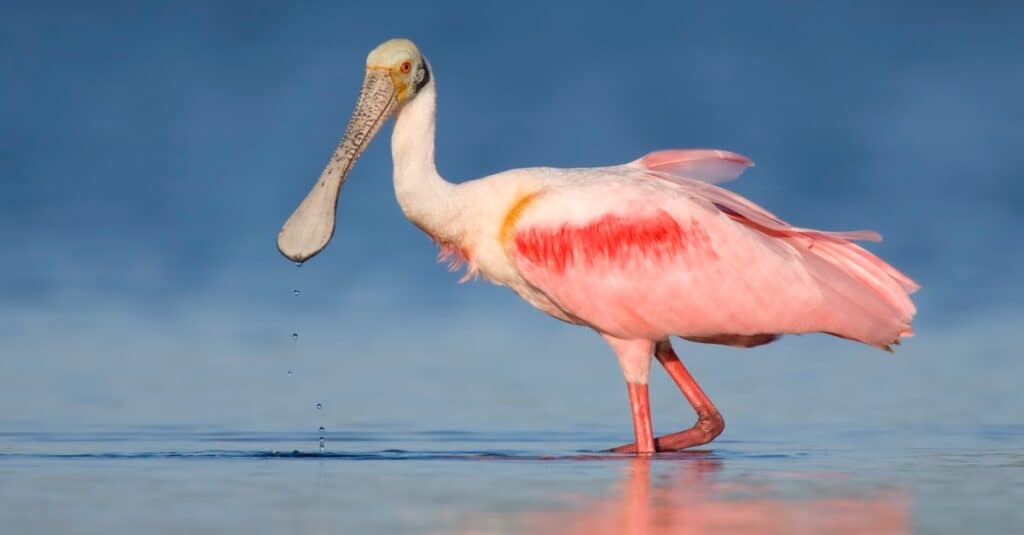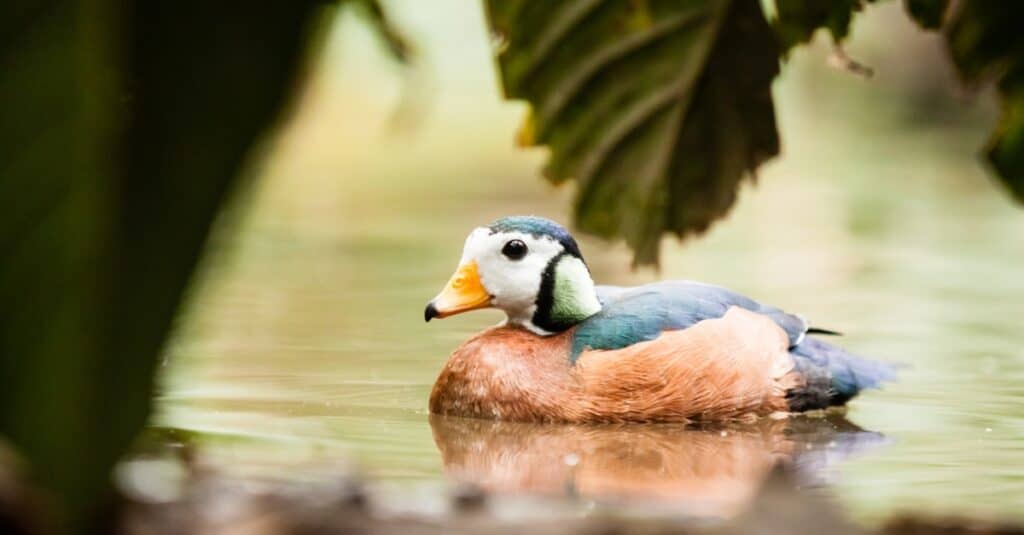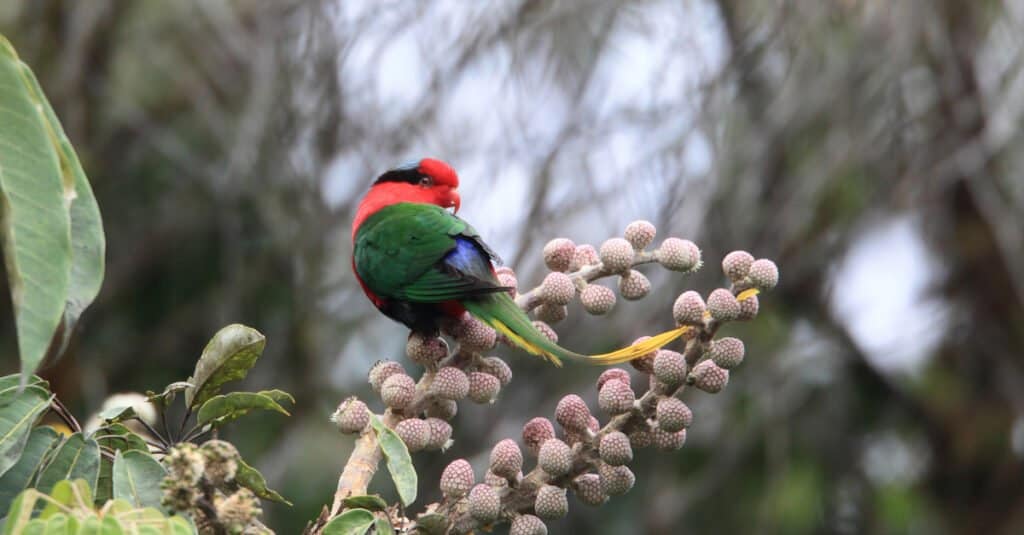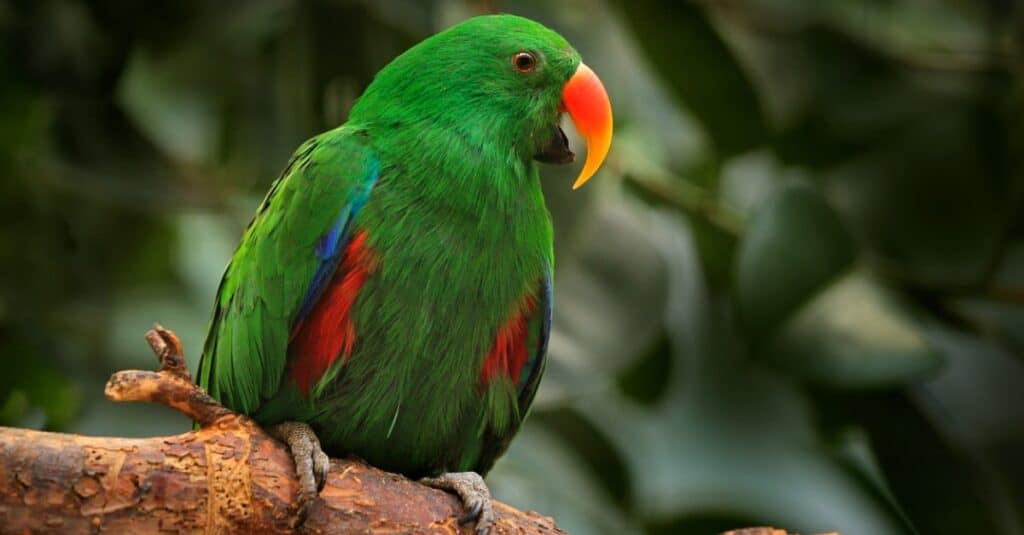To know what a tropical bird is, you first have to know where the tropics are. They are that part of the earth that forms a band around the equator bordered by the Tropic of Cancer in the north and the Tropic of Capricorn in the south. Birds native to this band are considered tropical birds. Some birds aren’t native to the tropics but were introduced there, accidentally or on purpose. Birds native to the tropics have also been introduced in places outside the equator. These types of tropical birds are considered exotic birds. An example is the endangered yellow-headed amazon parrot, which is native to Central America but can be found in Florida, where it is exotic.
The tropics are also called the torrid or tropical zone. Because this zone gets more direct sunlight it tends to be hotter and wetter, so people associate it with the rainforest and the jungle. However, not all tropical habitats are warm and wet. The central Andes Mountains, for example, are found in the tropic zone and are cold and dry there all year. Yet, it is also home to different types of tropical birds. People also think of tropical birds as being invariably brilliantly colored and easily kept as pets, but some are drab as a house sparrow and impossible to domesticate. Read on to learn about eight different types of tropical birds.
1. Greater Rhea

©Ondrej Prosicky/Shutterstock.com
Of all the different types of tropical birds, the Rhea is one of the largest. At as much as 67 inches tall from head to foot, it’s the perfect example of a tropical bird that not only lacks brilliant colors but doesn’t live in the rainforest or the jungle. Found from Brazil to Argentina, this flightless bird lives in a habitat of open grassland, pampas, and salt marshes. Like its distant cousin the ostrich, it has an oval body, a long neck, and long, shaggy feathers. The overall impression is of a bird whose plumage is a combination of black, grayish-brown, and white. It has three short, thick, dinosaur-like toes.
Though the Rhea doesn’t fly, it has strong wings that it opens up to give itself some speed as it runs and to court females. Males mate with several females who then lay their eggs in a nest that he builds on the ground. When the nest is full, he drives the females away and incubates the eggs by himself. The females in turn just move on to the nest of another male. The bird is also found in Germany and the United Kingdom. It’s exotic in these places but has adapted surprisingly well.
2. Hamerkop

©iStock.com/neil bowman
This medium-sized bird lives in much of Africa and Madagascar. A wading bird, it’s found on the banks of shallow lakes, marshes, and rivers, where it eats insects, rodents, small fish, and other aquatic animals. It gets its name because it has a backswept crest and a long bill that makes its head resemble a hammer. Besides the unusual shape of its head, this bird is famous for the great size of its nest, which is made of sticks and resembles an oven with a front entrance. The mating pair builds more than one of these nests on cliffs and in trees near water during their breeding season. Hamerkop nests have an internal egg chamber.
Though not a beautiful bird, the hamerkop has strong, large, rounded wings, and it flies through flapping and gliding. When the bird flaps its wings it draws its head in, but when it glides it extends its neck. It may also hold its wings out when it runs to give it a bit of a lift. Its plumage is brown, though there’s a bit of iridescent purple on its back, and the tail feathers are barred with darker brown. The hamerkop’s legs are long and skinny but not as long as its cousin the shoebill stork’s and strangely, its feet are only partially webbed.
3. Roseate Spoonbill

©iStock.com/Canon_Bob
This wading bird is a fascinating combination of the beautiful and the ugly. The ugly is a naked head with green skin and a long bill with a broad, flat end that gives the bird its name. The neck is sparsely feathered in white. The beauty of the bird is found in its wings and underparts, which are a glorious rose color, while its wings, tail, and legs are scarlet. The bird’s eyes are also red.
The roseate spoonbill can be found as far north as Florida and Georgia and down through Central America, east through the Caribbean, and south to Argentina. It thrives in a marshy habitat of mangrove swamps and lagoons. The spoonbill builds large, messy nests in the branches of mangrove trees.
4. African Pygmy Goose

©iStock.com/Jarrycz
This small bird lives in pools and lagoons in much of subSaharan Africa and Madagascar. Only about 13 inches long, it’s more a duck than a goose. It is a colorful creature, but its colors are more on the neutral side. The male goose has a white face, black eye patches, a black crown that goes down the nape of its neck, and large ear patches of olive green. The top half of the front of the neck is white, while the bottom and the breast are chestnut. The goose’s flanks are a rich, dark reddish-brown, the back is dark, metallic green, and the underparts are white. It has sixteen black tail feathers, and the feathers of the wings are also black with iridescent green coverts. It has dark gray or black feet, reddish-brown eyes, and a bright yellow-orange bill. The females are much less colorful, though they too have areas of chestnut gray and brown and black.
The African pygmy goose spends much of its time paddling in the water. When it’s not swimming, it perches on tree branches. Though it’s not migratory, it is nomadic in its search for bodies of water such as swamps, pools, and wetlands covered with water lilies.
5. Harpy Eagle

©Chepe Nicoli/Shutterstock.com
This huge, near threatened eagle of the South American rainforests, has an admittedly terrifying look about it. Its talons are massive, as is its deep, hooked bill. The harpy eagle has talons and a bill making it an apex predator and allowing it to eat animals as big as sloths and monkeys. This bird of prey also takes iguanas, snakes, parrots, squirrels, armadillos, coatis, agoutis, and anteaters. Even porcupines are no match for it. Females are much bigger than males and can subsequently take larger prey.
Aside from being different sizes, the sexes look alike, with slaty feathers on the back, striped feathers on their legs, a white underside, and a black band around the neck. The tail is long, with gray bars. The eagle also has a crown of black feathers that it raises when it’s annoyed. Yet the harpy eagle mates for life and the mated pair treat each other with tenderness as they build their nest. They raise one chick every two or three years and don’t reach maturity until they’re at least four years old.
6. Kagu

©iStock.com/NataliaVo
Found only on New Caledonia, this blue-gray bird prefers to walk instead of fly, even though it can glide if it must. When it does fly its wings reveal patterns of chestnut, black and white. Its habitats are the mountain forest and areas around small streams, where it can tap the ground with its bill to find insects and little invertebrates such as earthworms. About 22 inches long, the kagu’s pretty feathers are combined with red legs and a crest that lies against the back until the bird raises it in an impressive fan.
A few things about the kagu set it apart from other birds. It’s the only bird known to have nasal corns over its nostrils. These are thought to keep soil out of the bird’s nostrils. It also has fewer red blood cells than other birds, but those blood cells carry three times as much hemoglobin. It’s protected from the humidity of the rainforest through powder down, and its eyes are positioned on its head to allow for good binocular vision as it searches the forest floor for food.
7. Papuan Lorikeet

©feathercollector/Shutterstock.com
This beautiful bird lives in the mountains of New Guinea. It’s a fructivore that drinks nectar and eats the pollen and flowers of air plants such as bromeliads. It also eats seeds and berries. It’s a small bird at around 10 inches long but brilliantly colored, with a cerise-colored head, neck, and chest with a black band stretching from the eyes and bordering a blue patch on its head. It has green wings and a green mantle, with yellow patches on the flanks and the breast, a band of purple iridescence on the abdomen, red coverts under the wings, and a very long green tail with yellow tips that ends in two long, thin tail feathers.
This lorikeet gathers in flocks that can be seen in the forest canopy. Even though its tail is a hindrance, it flies among the branches instead of over the treetops. Despite its beauty and its conservation status as least concern, Papuan lorikeets aren’t often kept as pets.
8. Eclectus Parrot

©iStock.com/Ondrej Prosicky
Also found on islands in the South Pacific and northern Australia, the colors of the sexes of this beautiful bird are so different that they look like different species. The male is brilliant green with areas of red, blue, and yellow. The female has a scarlet head, a blue patch on the nape of her neck, a maroon back and wings, a purple belly, and yellow coverts under her tail. Not only this, but the parrot has nine subspecies whose color patterns differ slightly depending on where they’re found. The parrot’s favored habitats are the lowland forest or more open country. The Eclectus parrot is a fructivore and also eats seeds, nuts, buds, nectar, and flowers.
Eclectus parrots are often kept as pets, and the hens are broody and territorial. If allowed to, a hen will search all over the house for a hidden place to lay her eggs, for in the wild the parrot nests in tree hollows. She’ll even incubate the eggs of other parrots and may lay infertile eggs without help from a male.
Summary
Here are our top picks for types of tropical birds:
| Number | Name of Bird |
|---|---|
| 1 | Greater Rhea |
| 2 | Hamerkop |
| 3 | Roseate Spoonbill |
| 4 | African Pygmy Goose |
| 5 | Harpy Eagle |
| 6 | Kagu |
| 7 | Papuan Lorikeet |
| 8 | Eclectus Parrot |
Next Up…
- The 10 Largest Tropical Lakes in the World: The tropical region is filled with surprising gems that never ceases to amaze. Here are a list of tropical lakes that are one of a kind.
- How Long is the Amazon River?: Amazon is undoubtedly the most dangerous and beautiful place on the planet. Find out about the Amazon river in this post.
- Scary Animals: The 10 Creepiest Animals in the World: When it comes to creepy crawlies, they are as scary as they are fascinating. Find out what the 10 creepiest animals in the world look like.
- 15 Awesome Types Of Beach Birds: Discover 15 birds that are commonly found on coastlines in this article.
The photo featured at the top of this post is © iStock.com/passion4nature
Thank you for reading! Have some feedback for us? Contact the AZ Animals editorial team.






